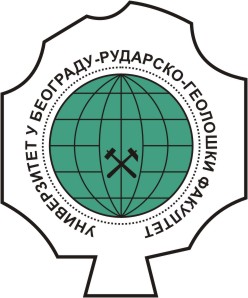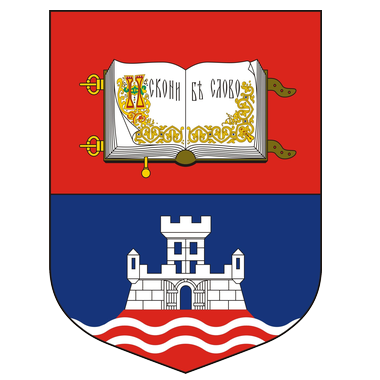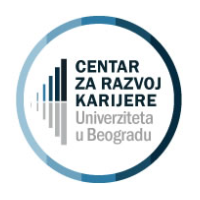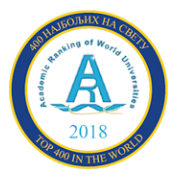Study program:
Mineral Processing (VIII semester -BsC) |
|
Name of subject: Microscopic Methods in Mineral Processing |
Instructors:
Prof. Aleksandar Pačevski |
|
Status: Optional |
|
ECTS: 5 |
|
Prerequisites: Students who choose this course are pre-conditioned to attend Methods of testing mineral resources |
Course Objectives:
Modern mining and the principles of sustainable development, environmental protection, take care that deposits of mineral raw materials are non-renewable, that energy is deficient. In these facts, this course finds its very important place. The goal is to continuously monitor the behavior of the raw material at all stages of concentration, monitor the degree of liberation, make a forecast with the highest probability of the behavior of the ore - the future raw material during its treatment. On the basis of such data, the most optimal technological schemes for the processing of one ore are made. |
Learning Outcomes:
Upon completion of this course, students will be able to recognize and identify minerals in crushed (or milled) raw material, to identify the basic structure types and to predict the rate of release of certain minerals in raw materials; to perform micrometric measurements on a raw material, to determine the degree of liberation of a given mineral, to identify types of accretions and the possibility of liberation; to determine the inegral degree of liberation of minerals; to create a model for the release of minerals in the function of grinding fineness, in the function of mineral content. |
Content:
Theory teaching
Microscopic methods of quantitative and qualitative analysis of geogenic and technogenic raw materials. Mineral composition of the raw material. Samples; Analysis of the modal composition. Characterization of mineral raw material with the help of an image analyzer; Quantification of visual information. Rational analysis. Identification of mineral grains in PMS products. A set of ores; paragenesis; Physico-chemical properties of minerals. Accessories and instruments for determining the physical and chemical properties of minerals. Polarizing ore microscope. Tests of mineral geogenic and technogenic raw materials by the ore polarization microscope. Qualitative optical properties of ore minerals. Methods of micrometric measurements on mineral grains. Quantitative analysis in ore microscopy. Measurement techniques: De Lesse’s method (planimetric), Rosival-Shand method (linear), Glagolev-Chayes method (points); accuracy analysis. Release of minerals. Models of mineral release. Structural characteristics and release, integral model of the kinetics of grinding and release of minerals. Models of liberation. Determination of liberation by a ore polarization microscope. Liberation in the function of grinding fineness, coarsening of aggregates, mineral content, cohesive bonding of minerals. Practical teaching
Working with a stereobinocular microscope (binolar magnifier). Constructions, types, accessories, operation. Characteristics of minerals - optical, physical, morphological, structural and textural. Identification of mineral of crushed raw material. Characteristics and identification of minerals of crushed Pb-Zn raw materials. Intensity of release, behavior at concentration. Characteristics and identification of minerals of crushed Cu, As-Hg-Sb-Ba raw materials. Characteristics and identification of minerals of crushed Fe-Ti, Cr, Ni-Co-U, Mn, Mn raw materials, etc. Ore polarization microscope, parts and work. Types, accompanying accessories. Image analyzer. Measurements by microscope. Identification of minerals in ore preparations (ores and products of concentration). Identification of minerals in ore preparations of Pb-Zn ore and concentration products. Characteristics of fragmentation and degree of liberation. Identification of minerals in ore preparations of Cu, As-Hg-Sb-Ba ore. Identification of minerals in the ore preparations of Fe-Ti, Cr, Ni-Co-U and other ores. Determination of the degree of release of minerals of raw material. (Stereobinocular microscope, ore polarization microscope). Model of raw material, accretion grains. Calculation of the integral degree of release of the minerals of the milled raw material (at different grinding fineness). Prognosis of liberation. Display and analysis of results. |
Suggested Reading List:
- Tomanec R., 2000: Metode ispitivanja mineralnih sirovina u PMS. –
Izdanje: RGF, Beograd. st. 315.
- Tomanec R., Vakanjac B., 2001: Rudne parageneze, koautorska skripta. RGF, Beograd.
- Ineson, P. R., 1989: Introduction to practical ore microscopy. - Longman earth
science series, John Wiley & Sons, Inc., New York.
|
Conduct of the Course:
Teaching takes place through the lectures of the desk, along with the PowerPoint presentation, with suitable short films, a lot of photographs taken with ore polarization microscope, macro photography, as well as diagnostics of samples of minerals and ores from most of the world deposits of mineral raw materials (RGF collection). Students perform shooting on different types of polarization microscopes, and they also introduced with modern image analyzers. |
Fund hours:
| Lectures |
Exercises |
Other forms of teaching |
Study research |
| 2 |
2 |
0 |
0 |
|
Assessment:
| Final Exam |
ECTS |
| Written exam | 40 |
| Classwork Assessment |
ECTS |
| Class Participationа | 10 | | Practical Classes | 30 | | Written tests | 20 |
|
|
Additional Assessment Criteria: - |
|
|






